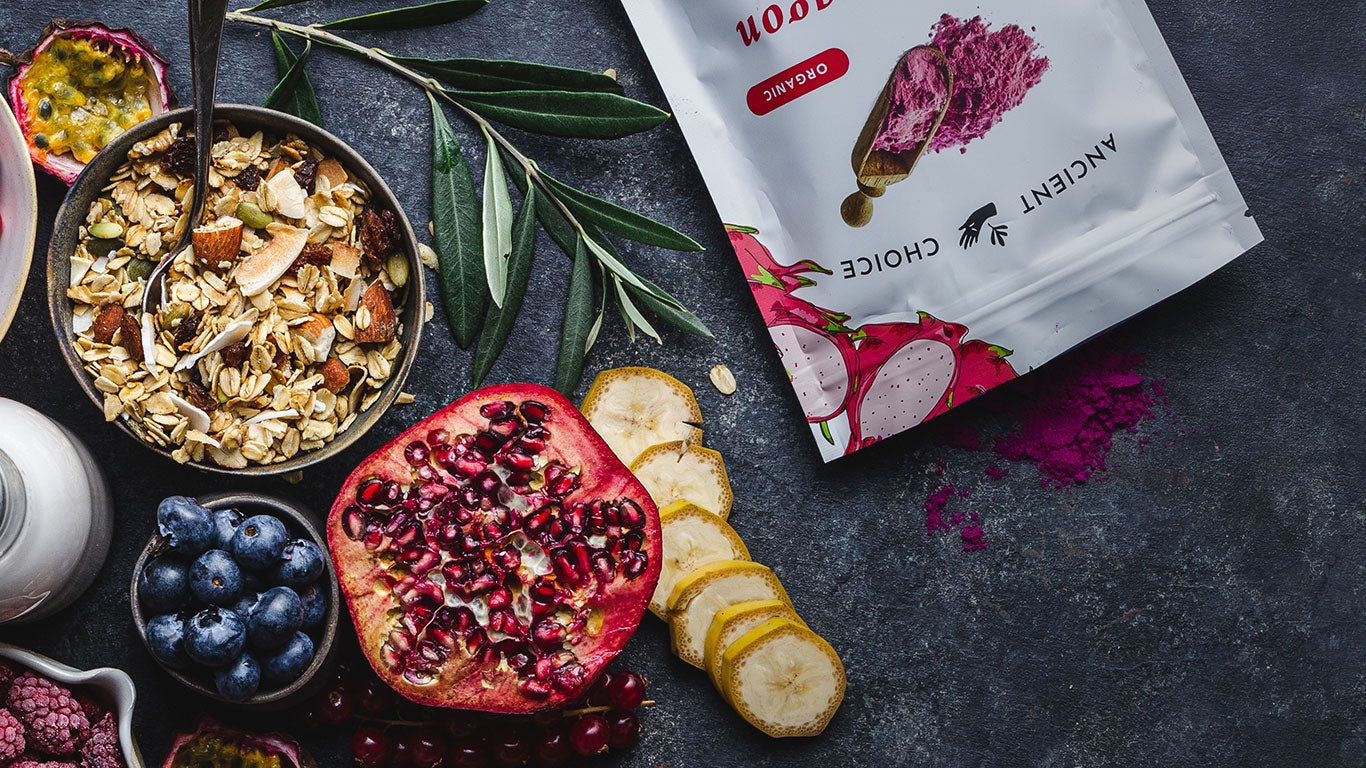
Blue Matcha Tea, also known as butterfly pea flower powder, is famous for its dazzling ability to change color and for its numerous health benefits. However, although you may have seen it before, you might be wondering what blue matcha actually tastes like. In this article, we'll explore the taste of blue matcha, what factors affect its flavor, and how it compares to traditional matcha.

What Does Blue Matcha Taste Like?
The taste of blue matcha is often described as earthy, floral, and slightly sweet. Most people agree that the earthy notes resemble green matcha but without the astringency. Instead, blue matcha has a subtle finish similar to chamomile.
Blue Matcha Aroma and Texture
Blue matcha has a delicate floral scent that is reminiscent of wildflowers, with notes of jasmine and rose petals. There may also be a hint of sweetness that lingers in the nose.
Avid tea drinkers may notice similarities between the fragrance of blue matcha and other herbal teas.
When brewed, the aroma becomes more pronounced and fills the room with a pleasant and calming scent. Overall, the aroma of blue matcha is soothing and inviting, making it a delightful beverage to enjoy in any setting.
Blue matcha has a smooth and velvety texture, with a mouthfeel that is similar to traditional green matcha. When whisked with hot water, the fine powder of butterfly pea flowers creates a frothy and creamy consistency that is rich and satisfying.
Of course, the flavor and aroma of any particular batch of blue matcha also depends on the origin and quality of the butterfly pea flowers, as well as the drying, storage, and preparation techniques used to produce the famously blue tea.

What is Blue Matcha?
OK, so it sounds tasty enough to try, but first you might be wondering, what is blue matcha anyway?
Blue Matcha is actually the name given for the powdered form of butterfly pea flowers, which come from the Clitoria ternatea plant. The flower is known by many names, such as butterfly pea, blue pea, aprajita, Cordofan pea, or Asian pigeonwings.
Recently, blue matcha powder has been grabbing a lot of attention because of its versatile uses, including a natural food colorant, antioxidant booster, meditative tool, and natural cosmetic ingredient. That’s not to mention its striking ability to change color when mixed with lemon or lime.
Factors that Affect Taste
Type of water
We suggest using high quality spring water to prepare your blue matcha tea because it is free of impurities and contains the right balance of minerals to bring out the best flavor from the tea. Filtered water may be used as well as long as it retains the original minerals.
Hard water and well water should be avoided, as they contain high levels of minerals like calcium and magnesium. These minerals can make the tea taste harsh, bitter, or even metallic.
You should also avoid distilled water or water filtered by reverse osmosis, which lack the minerals necessary to bring out the full flavor of blue matcha tea.
Brewing Temperature
The ideal brewing temperature for blue matcha is approximately 176°F (80°C). At this temperature, the blue matcha tea has a milder flavor profile with delicate floral and fruity notes.
If brewed at a higher temperature, the tea may develop a bitter taste and lose some of its subtleties. On the other hand, brewing at a lower temperature may not extract enough flavor, resulting in a weaker cup of tea.
We find it helpful to use an electric kettle with a temperature setting to achieve the perfect cup of blue matcha.
Origin
Generally, the highest quality blue matcha powders are from the northern region of Thailand. If you want an authentic tasting experience, you should seek premium flowers grown and sun-dried in Thailand.
Powder Grind Size
Blue matcha powder can be found in various degrees of fineness. The more finely ground powders will typically “dissolve” better in water and will feel creamier. Note that the powder does not actually dissolve but instead forms a suspension - that’s what makes it matcha instead of tea!
Medium grinds, which fall out of suspension more quickly, will lend themselves to a lighter mouthfeel, closer to a traditional brewed tea.
Which is better? That is somewhat up to preference. You may want to try both a “fine grind” and “medium grind” blue matcha and see which you enjoy more.
Secondary Ingredients
Of course, adding other ingredients to blue matcha will affect the taste as well. For example, milk or cream will bring out much different flavors than if you had mixed a beverage with lemon.
If you are looking for the best introduction to blue matcha, we recommend making either a blue matcha latte or a magic lemonade. And don’t stop there - blue matcha tea is a versatile ingredient that can be used in many different ways.

How Should I Store Blue Matcha?
To best preserve the delicate flavors of the butterfly pea flowers used to make blue matcha, you should store your blue matcha in an airtight container kept in a cool, dark place.
Exposure to air will oxidize the flowers, resulting in damaged color, flavor, and potency. The same can be said of heat and light.
We recommend keeping your blue matcha in a tin canister or a sealed bag, ideally in a cupboard.
Try It Yourself
Blue matcha is a unique and interesting ingredient that is definitely worth a try. Whether you're drinking it in a beverage or using it in a recipe, it adds a touch of color and sophistication to anything you can imagine.
And with its health benefits, including high levels of antioxidants, blue matcha is a superfood worth exploring. So next time you're looking to try something new, consider adding blue matcha to your pantry and see what delicious creations you can come up with.







